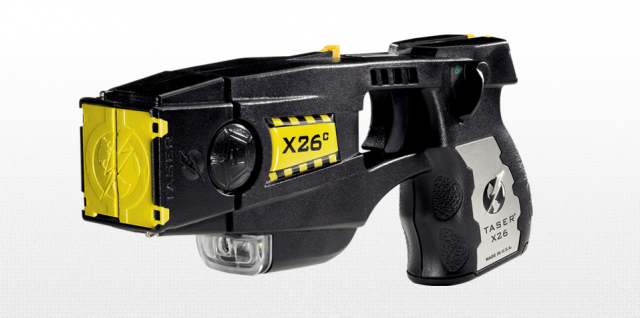Every member of the San Francisco Police Commission needs to see the movie I just watched.
It’s called Killing Them Safely, and I caught it at the Roxie. You want to understand the problems with arming the cops with Tasers? It’s all here.
Director Nick Bernadini got amazing access to Taser International, interviews with its key players – and footage from depositions that executive gave in lawsuits over deaths that the devices caused.
He also talked to small-town police officers in Warren, Michigan, who used the weapons the way they were trained to use them – and people died.
The message from the documentary is this:
A company that had come up with this electronic shock device that was supposed to immobilize people was deeply in debt and near bankruptcy because the stun gun didn’t always work. So they quadrupled the voltage, marketed it aggressively, made a fortune in the process – and ignored or downplayed warnings and evidence that the Tasers might not be safe.
In fact, in marketing materials and training sessions with police departments, the Taser team said that there was no way the electric shocks the guns delivered could possibly cause any harm, other than momentary incapacitation and a couple to tiny puncture wounds.
So the cops were told, in essence, that this was an entirely safe way to subdue someone. Go ahead, shoot with the Taser; nobody can get hurt.
It turns out that lots of people can get hurt.
The lawyers who are interviewed compare Taser to the tobacco industry, which for years had data to show that its product was deadly but ignored and suppressed it. In this case, the company’s senior executives insisted, under oath, over and over, that they had no reason to believe that zapping someone with their guns could cause any health problems.
The 270 people who had died? They would have died anyway, the executives said. They must have had other health problems.
The documentary reveals how scientists hired by Taser reported that heart muscles could essentially stop working when hit by the jots; nothing changed.
Eventually, the company decided to warn its customers not to shoot people in the chest – but said that the guns were still safe, and the issue was just potential litigation.
Oh, and by the way: Almost all of the training that officers got, and the information they were given, came from Taser.
So cops just zapped folks left and right, their brand new toy and easy way to solve any situation (including simple traffic stops, after which one young man was Tased and died.) A man from Poland who was lost in a Canadian airport, and agitated ad confused after a long flight when he couldn’t find a way out, was Tased and died.
And all along, Taser officials said that the weapons were nearly 100 percent safe, that they saved lives by giving cops and alternative to using batons, pepper spray, or guns.
In the end, the chief and the cops from Warren, and officials from British Columbia, where Tasers were either banner or largely banned, said they were doing just fine without the stun guns: There were no more injuries to officers, no more injuries to suspects … the Tasers had done nothing but caused problems.
Taser officials say they are saving lives by offering cops a non-lethal alternative to shooting someone. But crisis intervention, slowing down, space and time, and lots of other options are also non-lethal, and in every one of the past five officer-involved shootings in SF, there was no need for lethal force.
And what the data in the movie shows is that if you give cops Tasers, they become a crutch – just zap people first and figure out the situation later Which is sometimes way too late.
This comes up Wednesday at the Police Commission, which meets at 5:30 in Room 400 City Hall.





